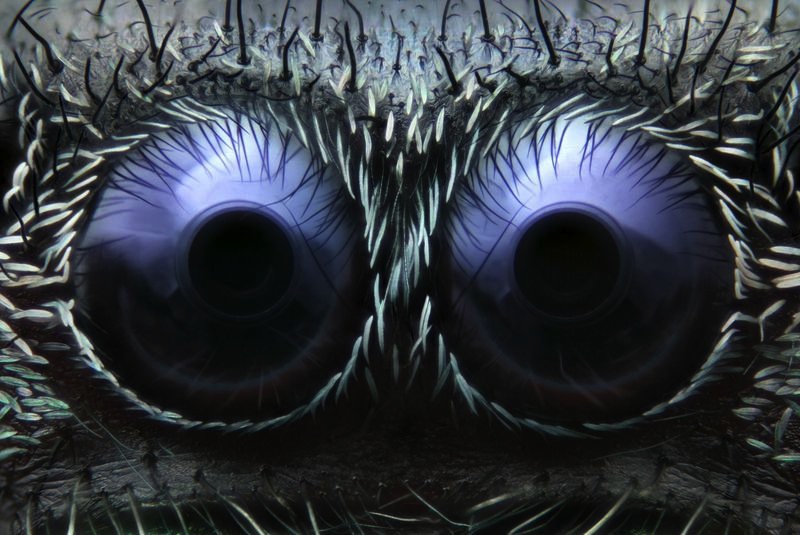10 Cutest Animals in Science in 2014
Even the editors of serious scientific journals are not immune to the charms of sleepy koalas and penguins playing with robots. The video team at Nature picked their top 10 favorite science stories involving cute animals (and some bots) of this year. Here are their choices:
10. Monkeys use how-to videos to get bananas
Can you teach monkeys in the wild how to solve a puzzle with educational TV? According to this experiment in Brazil, you can. Using mini movie theaters (composed of a laptop screen in a cardboard box installed in a tree), researchers showed that wild marmosets could learn how to open a container and get a banana slice simply by watching a how-to video. The findings were published in September in the journal Biology Letters.
9. "Magneto dogs"
Dogs tend to poop while aligned with the north-south axis of the Earth's magnetic field. That's the conclusion German and Czech researchers arrived at after spending two years watching 70 dogs relieve themselves. The authors of the study, which appeared in the journal Frontiers in Zoology, are still grasping for an explanation. The discovery of this long-overlooked quirk, while considered cute by Nature, was also deemed worthy of an IgNobel Prize, an award that honors the absurd in science.
8. Dumbo octopod
Researchers collected some amazing footage of marine life in the Gulf of Mexico this year during an expedition aboard the National Oceanographic and Atmospheric Administration (NOAA) ship Okeanos Explorer. One highlight was a rare video of a dumbo octopod with its arms coiled into tight spirals.
Get the world’s most fascinating discoveries delivered straight to your inbox.
7. Dancing frogs
Fourteen new species of Micrixalus frogs were discovered in western India this year. The males of the species have a peculiar habit of flicking their legs. (Females are apparently attracted to good dancers.) The frogs were described in the Ceylon Journal of Science.
6. Cute lizards. Troubling find.
For anole lizards in the Caribbean, it turns out that shipping lanes are starting to have a bigger influence than geography on how species island-hop, scientists explained in a Nature study this year. Trinidad, for example, though somewhat isolated in the southern edge of the Caribbean, is home to one native anole lizard but four invasive anoles, Quanta magazine reported. Meanwhile, Cuba is large but economically isolated because of a U.S. trade embargo; it has 64 native anoles but no exotic species.
5. Coin-size robot swarm
These insectlike robots were apparently cute enough to make the cut. Researchers at Harvard built an army of more than 1,000 miniature robots that can race into formation, creating three-dimensional patterns, such as a starfish shape. The machines are wired to mimic creatures like ants and bees, which gather in huge numbers to build complex structures. The work was described in the journal Science in August.
4. Monkeys with great hair
Secretive saki monkeys are sometimes called toupee monkeys for their floppy mop of hair. This year, scientists announced that they found five new species of the creatures in Brazil, Peru and Bolivia. The new research, published in the summer issue of the journal Neotropical Primates, brought the number of known saki species to 16.
3. Jumping spider
"Cute" might be more than a little subjective here. Jumping spiders are famous for their good vision. For his close-up shot of just two of the eight eyes of a jumping spider, photographer Noah Fram-Schwartz won third place in Nikon's annual microphotography contest in October.
2. Penguin bots
How do you infiltrate a penguin colony if you're a human? Send a robot spy. Better yet, send a robot spy disguised as a penguin chick. That's what a team of researchers did to get close to a colony of emperor penguins in Antarctica. The notoriously shy birds were quite receptive to their robotic interloper. The penguins let the rover get close enough to read their ID tags; some even vocalized at the fake chick. The unusual methods were described in Nature in November.
1. Tree-clinging koalas
Scientists finally discovered why koalas hug trees: It keeps them cool. On French Island, near Melbourne, Australia, temperatures can spike to more than 104 degrees Fahrenheit (40 degrees Celsius) during the summer. Through thermal imaging, researchers found that koalas in this habitat were often clinging to trees that were much cooler than the ambient air temperature, sometimes by as much as 9 degrees F (5 degrees C). The findings were published in June in Biology Letters.
Follow Megan Gannon on Twitter. Follow us @livescience, Facebook & Google+. Original article on Live Science.







